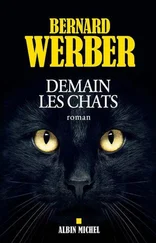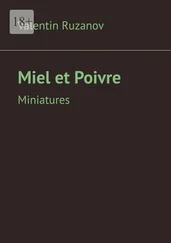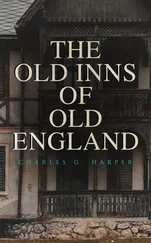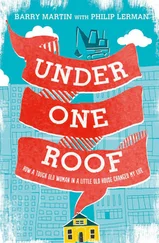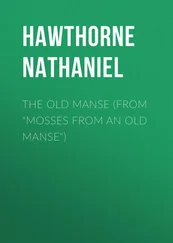Joshua Foster - Chats on Old Miniatures
Здесь есть возможность читать онлайн «Joshua Foster - Chats on Old Miniatures» — ознакомительный отрывок электронной книги совершенно бесплатно, а после прочтения отрывка купить полную версию. В некоторых случаях можно слушать аудио, скачать через торрент в формате fb2 и присутствует краткое содержание. Жанр: foreign_antique, foreign_prose, на английском языке. Описание произведения, (предисловие) а так же отзывы посетителей доступны на портале библиотеки ЛибКат.
- Название:Chats on Old Miniatures
- Автор:
- Жанр:
- Год:неизвестен
- ISBN:нет данных
- Рейтинг книги:3 / 5. Голосов: 1
-
Избранное:Добавить в избранное
- Отзывы:
-
Ваша оценка:
- 60
- 1
- 2
- 3
- 4
- 5
Chats on Old Miniatures: краткое содержание, описание и аннотация
Предлагаем к чтению аннотацию, описание, краткое содержание или предисловие (зависит от того, что написал сам автор книги «Chats on Old Miniatures»). Если вы не нашли необходимую информацию о книге — напишите в комментариях, мы постараемся отыскать её.
Chats on Old Miniatures — читать онлайн ознакомительный отрывок
Ниже представлен текст книги, разбитый по страницам. Система сохранения места последней прочитанной страницы, позволяет с удобством читать онлайн бесплатно книгу «Chats on Old Miniatures», без необходимости каждый раз заново искать на чём Вы остановились. Поставьте закладку, и сможете в любой момент перейти на страницу, на которой закончили чтение.
Интервал:
Закладка:
In some of the Limoges work we see attempts at colouring the cheeks; but the result is not satisfactory; whereas in Petitot it leaves absolutely nothing to be desired, and the most minute differences of character find expression in the art of this wonderful man. Take as an example the two portraits of Louis XIV., to be seen in the Jones Collection in the Victoria and Albert Museum, one representing the Grand Monarque when young, the other in more advanced years; or, from the same Collection, take the portraits of Mme. de Montespan and Mlle. de la Vallière; and compare these again with the insipidity and monotony of Lely and Kneller, the two artists most in vogue in this country at that time; here you have upon a small piece of gold, perhaps hardly bigger than a finger-nail, nearly all that may be looked for in a portrait, coupled with a perfection of technical execution to which it is impossible to do justice in words. One comes away from an examination of that admirable collection which the nation owes to the generosity of Mr. John Jones with a paramount feeling of astonishment, wondering how such work was done.
Of course Petitot has had innumerable imitators; and although the standard of the Collection to which reference has just been made is very high, there are in it examples which are instructive, and serve to show how supreme the master was in his own line. A contemporary pupil, namely Jacques Bordier, was a cousin of the Pierre Bordier, Petitot's old master and colleague, of whom I have just spoken. According to M. Reiset this Jacques Bordier also worked in England with Petitot. Like Petitot, he returned to the Continent, and did a great deal of work in Paris upon watch-cases; the two men married two sisters, Madeleine and Margaret Cuper, in 1651. Pierre Bordier stopped in this country and executed an elaborate watch-cover, designed as a memorial of the Battle of Naseby, presented to General Fairfax, and described in the catalogue of the sale of Strawberry Hill, where it was sold. It was, doubtless, the troubles of the Civil War which drove the great enameller back to France, where he was well received by Louis XIV., and commissions flowed in upon him until the close of his life; indeed, he is said to have retired to Vevey to escape the importunity of his patrons; and there he died, at an advanced age, in the year 1691.
The art of which this incomparable miniaturist was such a great exponent was peculiarly adapted to a form of patronage much in vogue at that time; that is to say, it was employed in the adornment of costly and exquisite snuff-boxes. These boites aux portraits , as they were called, were extensively used for diplomatic purposes, and portraits of the Grand Monarque were ordered by the dozen at a time. The presentation of boxes of such a character with a portrait on, or inside, the lid, with or without a setting of brilliants, as the rank and importance, or otherwise, of the fortunate recipient required, were part of the ceremonial usage and Court etiquette of the day. The Collection left to South Kensington by Mr. Gardiner, the extremely choice examples in the Wallace Collection, and the still larger collection left by the Lenoirs to the Louvre, show the extravagant pitch to which work of this kind was carried, the diamond settings alone often running to a cost of many thousands of francs. For example, a portrait of Louis XVI., when Dauphin, was presented to Marie Antoinette. The portrait was painted by the most eminent miniature painter of his day, namely Pierre Adolphe Hall; the artist received 2,684 francs, and the cost of the box and brilliants was over 75,000 francs.
Petitot may be studied to full advantage at the Jones Collection, even better than at the Louvre, whilst at Hertford House there are only a couple of examples attributed to him. In private collections there are some notable works which passed from Strawberry Hill into the possession of the late Baroness Burdett Coutts; and the Earl of Dartrey also owns a number. The portrait, shown in this book, of Petitot le Vieux, is from this nobleman's collection, which, by the way, is also rich in examples by the brothers Hurter. These two enamellers came from Schaffhausen, being introduced to the British aristocracy by the Lord Dartrey of that day. Some thirty examples of their work were shown at the Loan Exhibition at South Kensington in 1865 by the then Lord Cremorne. At Althorp is a portrait of the beautiful Duchess of Devonshire by John Henry Hurter; and Lord Dartrey has a portrait of Queen Charlotte painted by J. F. C. Hurter.
There is a large, though not particularly attractive, example of Boit's to be seen in the Ashmolean Museum at Oxford; but specimens of his art are not very common, and are not nearly so often met with as those by C. F. Zincke, whose spick-and-span style and bright blue draperies are well known; Oxford is rich in them.
This Dresden miniature painter, whose features are familiar to print collectors from the mezzotint of him and his wife by Faber, came to England in 1706 and obtained the patronage of George II., although that uninteresting monarch hated "boetry and bainting." Zincke's work is, indeed, typically early Georgian, and repeats the insipidities of Kneller on a small scale, with a persistent consistency which is monotonous in the extreme. Horace Walpole had a high opinion of his work; he declared that it surpassed that of Boit and rivalled Petitot, an opinion which few who know the merits of Petitot's exquisite art are likely to endorse.
Failure of eyesight led Zincke to retire in 1746; but he lived some twenty years longer. During the forty years that he practised his art he must have executed an enormous number of portraits, for he was the fashionable artist of his day, and so great was the patronage bestowed upon him that he raised his prices to limit the number of his patrons.
A pupil of Zincke's was William Prewitt, who is not, I think, very well known. There is an example by him to be seen in the Victoria and Albert Museum, a body-colour drawing. The Duke of Buccleuch has a portrait of Horace Walpole when young, also painted by Prewitt.
Another miniaturist who was especially an enameller was Charles Muss, said by some to be an Italian, and by others to have been born at Newcastle-on-Tyne in 1779. He was enamel painter to George III. and George IV.; and devoted himself especially to copying old masters. Examples of his work in this direction will be found in the Plumley Collection in the Victoria and Albert Museum.
A much better-known enameller is Nathaniel Hone, an Irishman of a self-assertive, not to say aggressive, personality, if one may judge by the tone of his remarks when he quarrelled with the Academy, of which he was a full member, over his picture called "The Conjurer." This indifferent painting excited an amount of attention of which it was quite undeserving from the tongue of scandal, which asserted that Sir Joshua Reynolds and Angelica Kauffmann were satirised in the composition, and that one of the naked figures dancing in the background was intended for the fair Academician.
Hone essayed the various branches of art with varying success. There is a characteristic portrait of himself in the Diploma collection of the Royal Academy. He, too, had a share of Royal patronage, and painted many of the notabilities of his day, including the lovely Misses Gunning. He had a son, Horace Hone, who was made an Associate of the Academy, and who also practised as a miniature painter. His work is considered inferior to that of his father.
John Plott, another miniaturist, was also a pupil of the elder Hone, and was born at Winchester, where he studied law. Forsaking that pursuit, he came to London, and was at first a pupil of Richard Wilson R.A.
Two other Academicians associated with this period, and both enamellers of exceptional ability, are George Michael Moser and Jeremiah Meyer. Moser was the son of a sculptor, and was born at St. Galle, in 1704. Upon his arrival in this country he found employment with the Royal Family, and, being a fine medallist, was commissioned to design the King's Great Seal. No doubt he had social gifts, and he certainly enjoyed the respect and friendship of Sir Joshua Reynolds. He was one of the most active founders of the Royal Academy, and was made its first Keeper.
Читать дальшеИнтервал:
Закладка:
Похожие книги на «Chats on Old Miniatures»
Представляем Вашему вниманию похожие книги на «Chats on Old Miniatures» списком для выбора. Мы отобрали схожую по названию и смыслу литературу в надежде предоставить читателям больше вариантов отыскать новые, интересные, ещё непрочитанные произведения.
Обсуждение, отзывы о книге «Chats on Old Miniatures» и просто собственные мнения читателей. Оставьте ваши комментарии, напишите, что Вы думаете о произведении, его смысле или главных героях. Укажите что конкретно понравилось, а что нет, и почему Вы так считаете.


